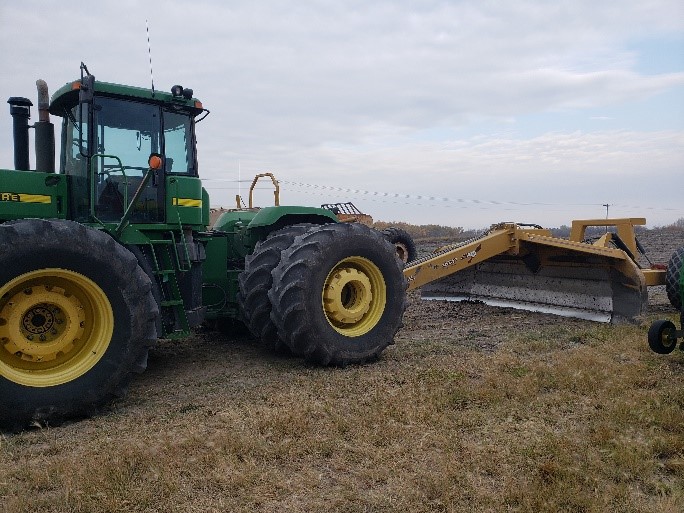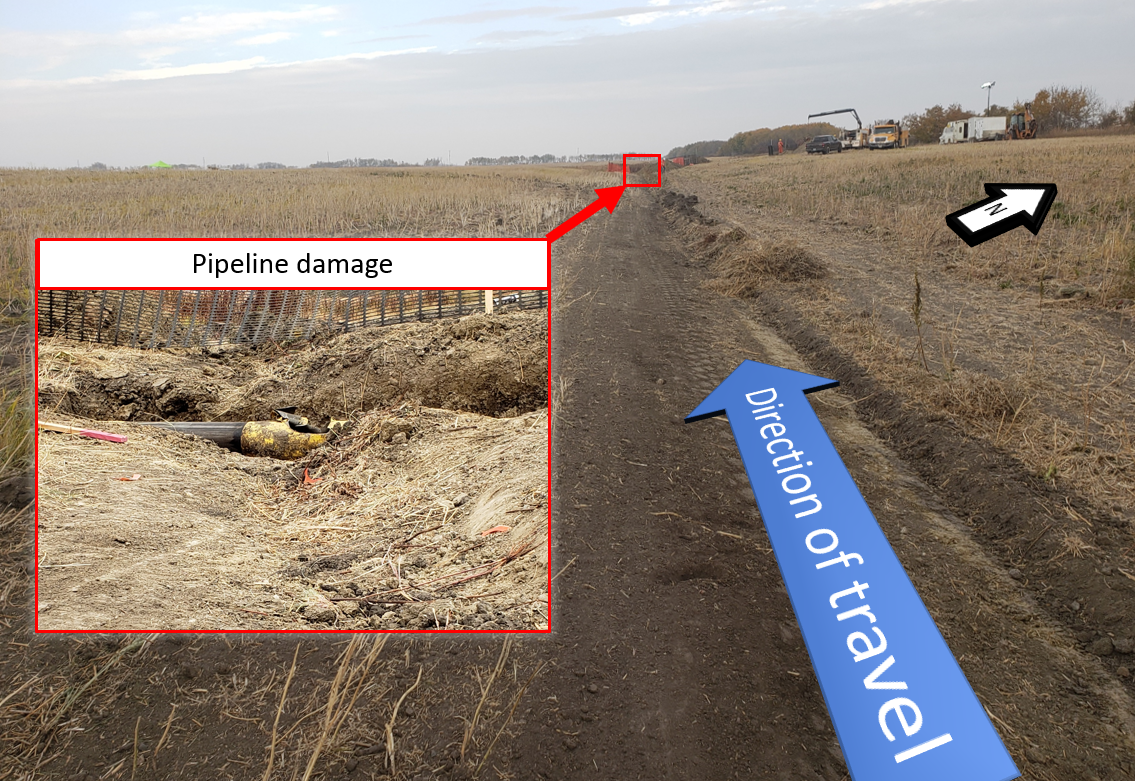15 March 2022
President and Chief Executive Officer
Manitoba Hydro
360 Portage Avenue
Winnipeg MB R3C 0G8
Subject:
Pipeline Safety Advisory Letter 01/22 (TSB occurrence P21H0143)
External risks to pipelines in agricultural areas
On 05 October 2021, a 6-inch natural gas pipeline was struck by a piece of bladed equipment being pulled by a tractor (Figure 1 ) on agricultural land near McAuley, Manitoba. The Minell pipeline, operated by Manitoba Hydro, ruptured and released approximately 84 000 m3 of natural gas. The released gas did not ignite and no one was injured. The Transportation Safety Board of Canada (TSB) investigation into this occurrence is ongoing.
During the site examination, it was determined that the pipeline was contacted while the bladed equipment was scraping the ground surface. The tractor and bladed equipment were travelling in a westward direction along the bottom of a drainage channel formed by the local topography. A pipeline depth of cover survey completed in 2009 did not identify any issues or trigger a more detailed assessment in the area of the occurrence. It is estimated that the bladed equipment penetrated the ground by less than 12 cm when it contacted the pipeline (Figure 2).
The Minell pipeline, installed in 1965, originates near Moosomin, Saskatchewan, and extends for about 70 km to Russell, Manitoba, through primarily agricultural land. Agricultural activities are permitted across the land over the pipeline to a depth of less than 30 cm; these activities do not require authorization unless conducted at a specific location, identified by the pipeline company, where such activities could affect the safety of the pipeline.Footnote 1
The Canada Energy Regulator Onshore Pipeline Regulations state, in part, the following requirements concerning the responsibilities of a pipeline operator: “A company shall develop, implement and maintain a damage prevention program that anticipates, prevents, manages and mitigates damage to its pipeline […].”Footnote 2 An effective damage prevention program includes ongoing land use monitoring to identify hazards and manage the risks related to pipeline damage prevention over time.Footnote 3
Pipeline operators need to be aware of the depth of cover over their pipelines to ensure that they are sufficiently buried or otherwise protected against normal agricultural activities that do not require explicit authorization. Given the risk of damage to underground pipelines by activities conducted on agricultural land, Manitoba Hydro may wish to review the management practices associated with its damage prevention program to ensure that the Minell pipeline is adequately protected.
The TSB would appreciate being advised of any action that is taken in this regard.
Upon completion of investigation P21H0143, the Board will release its report into the occurrence.
Yours sincerely,
Original signed by
Vincenzo De Angelis
Director, Investigations (Rail/Pipeline)
cc:
Vice President, System Operations, Canada Energy Regulator

